|
HISTORY
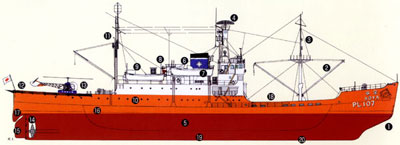 The
Sōya (宗谷) is a Japanese museum ship that previously served
as an icebreaker and patrol boat, and was the first Japanese
ship to take part in an Antarctic research expedition. The
Sōya (宗谷) is a Japanese museum ship that previously served
as an icebreaker and patrol boat, and was the first Japanese
ship to take part in an Antarctic research expedition.
Construction
The vessel that eventually became the Japanese icebreaker
Sōya, was originally named Volochaevets. It was ordered from
the Matsuo shipyard Koyagi Island, Nagasaki, Japan in 1936,
by the Soviet Union as one of three ice-strengthened cargo
ships (as part payment for the purchase of part of the South
Manchuria Railway (also known as the Chinese Eastern
Railway). Two other ice-breakers were Bolshevik and
Komsomolets. She was launched from the shipyard now renamed
as the Kawaminami Shipyard in February 1938. But as result
of the growing tension between Japan and the USSR she was
never handed over but rather was completed as an
ice-breaking cargo freighter for the Tatsunan Kisen Co. She
was now renamed the Chiryō Maru.
War time role
In November 1939 the Imperial Japanese Navy requisitioned
her and in February 1940 she was given her current name (the
same name had previously been used for the ex-Russian
armoured cruiser Varyag) and assigned duties as an auxiliary
ammunition ship/survey vessel. She had an eventful wartime
career being attacked with torpedoes in January 1943 by the
USS Greenling and in February 1944 near Truk being attacked
by aircraft from TF58. Ten crew were killed and the Soya
temporarily grounded
As a supply vessel
After the war she served as a repatriation ship and then as
a lighthouse supply ship. It was in this later role that she
acquired the nickname the 'Santa Claus of the Sea'
As an Antarctic research vessel
In 1956 she was overhauled and modified to make her ready
for Antarctic research. This involved re-engining with
diesel engines and the installation of a helicopter deck and
helicopters. Over the period 1956 to 1962 she made trips to
the Antarctic. On the second trip, in 1958, she rescued the
explorers from the first expedition who had become stranded
at the Syowa research station. Unfortunately they had to
leave the expedition's dogs behind. On Soya's return a year
later, two of the dogs, Taro and Jiro (who are now famous in
Japan) were found alive. The fame of these events was
extended by the film of the events Nankyoku Monogatari (lit.
"South Pole Story"; released in the U.S. as "Antarctica")
and by Disney's adaptation and Americanization in its film
Eight Below.
As an ice breaking rescue vessel
She then became an ice breaking rescue ship for the Maritime
Safety Agency, based in Hokkaido.
As a museum ship
She was decommissioned in 1978, and in 1979 became a
permanent exhibition at the Museum of Maritime Science,
Tokyo. |

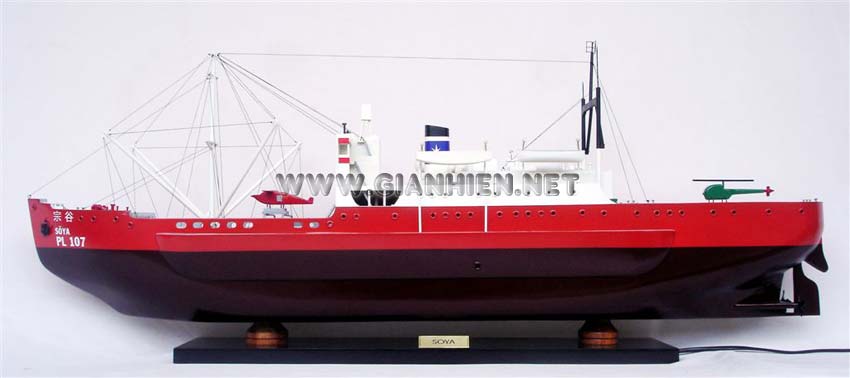
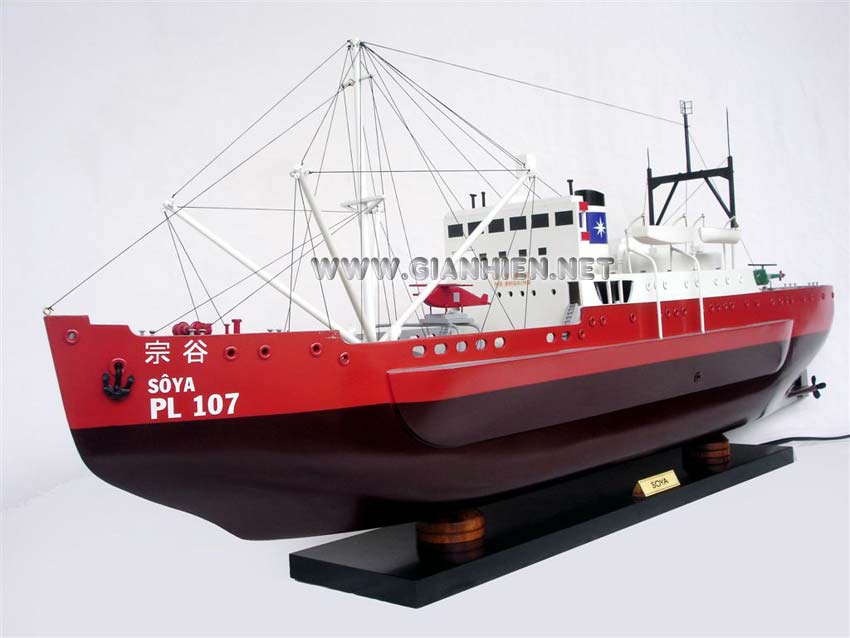
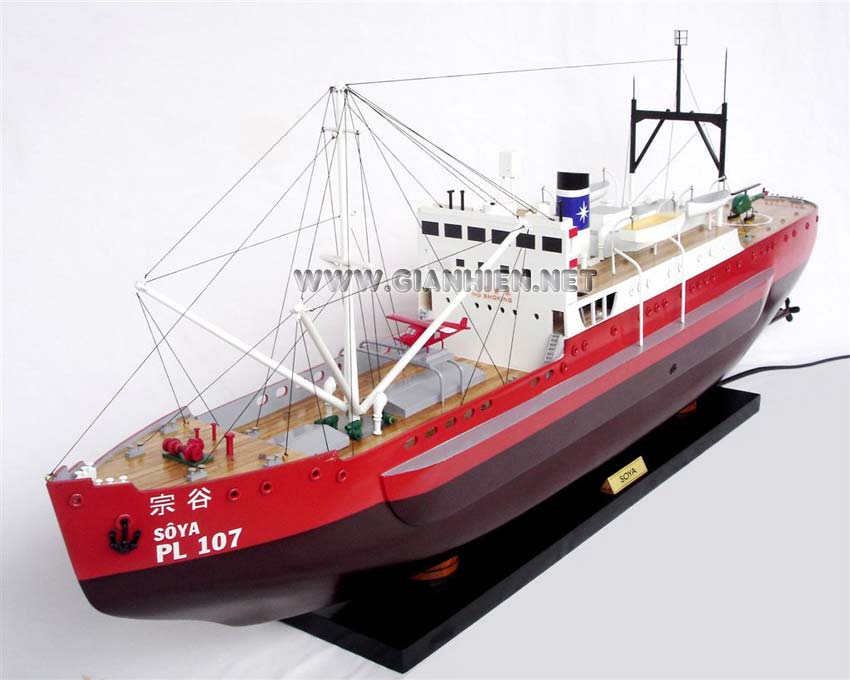
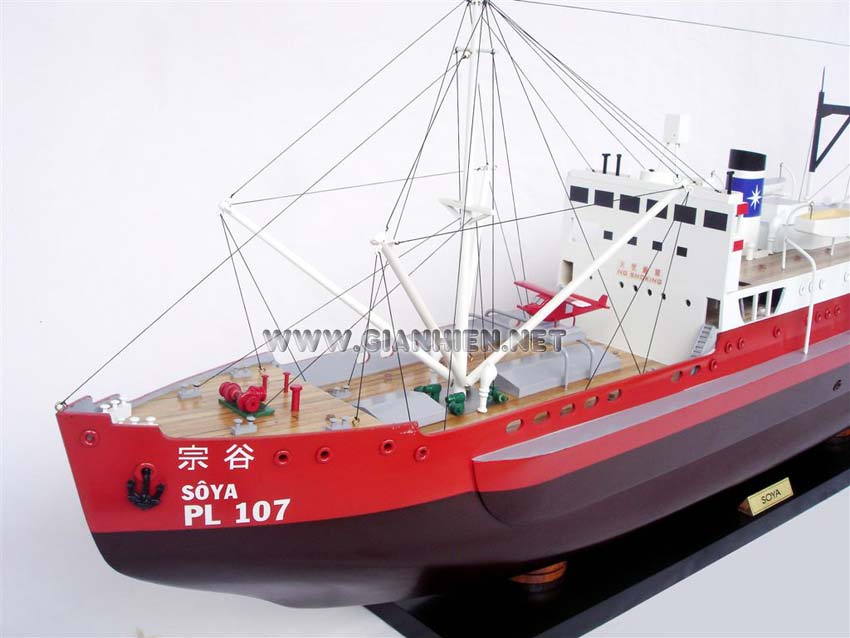
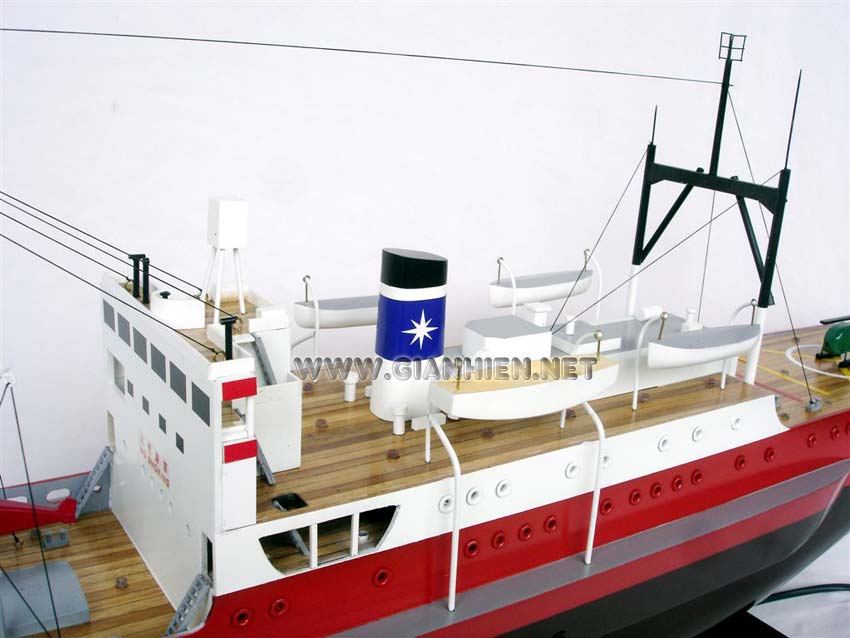
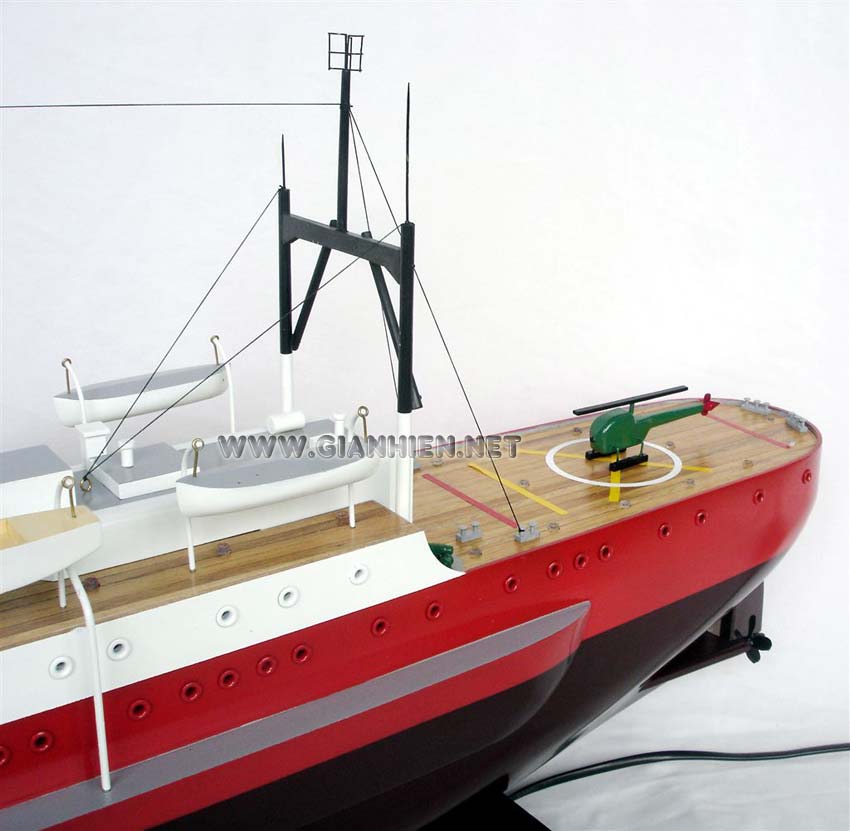
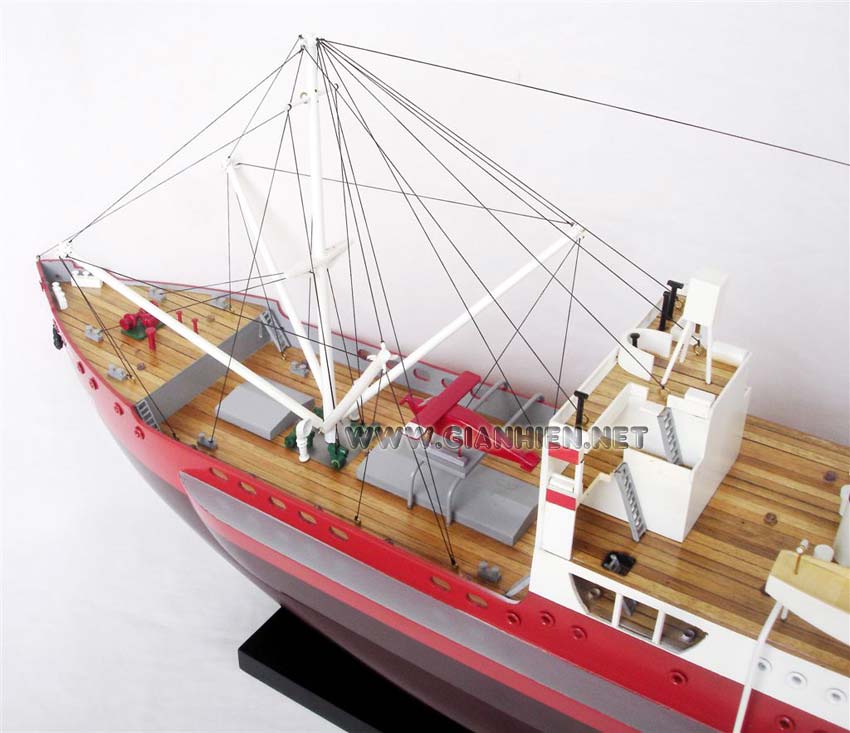
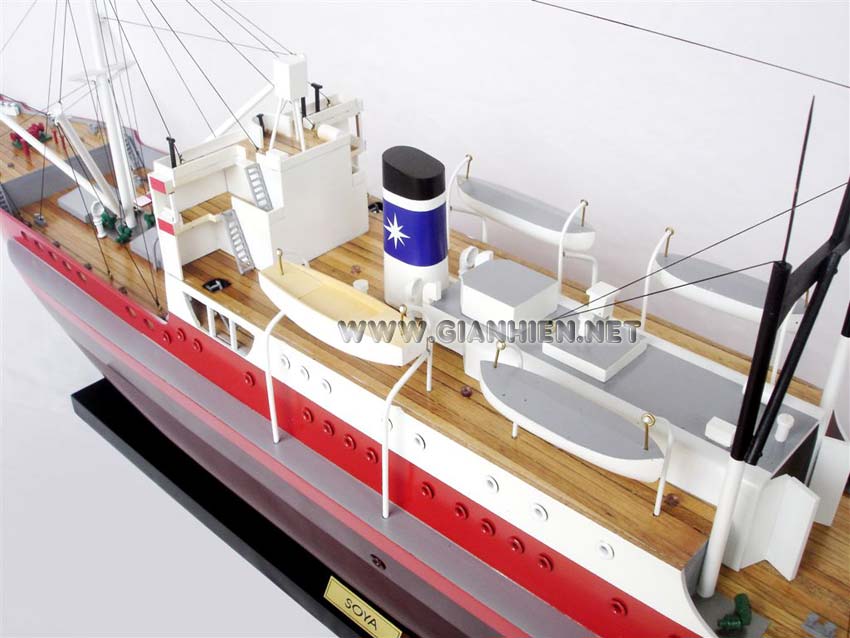
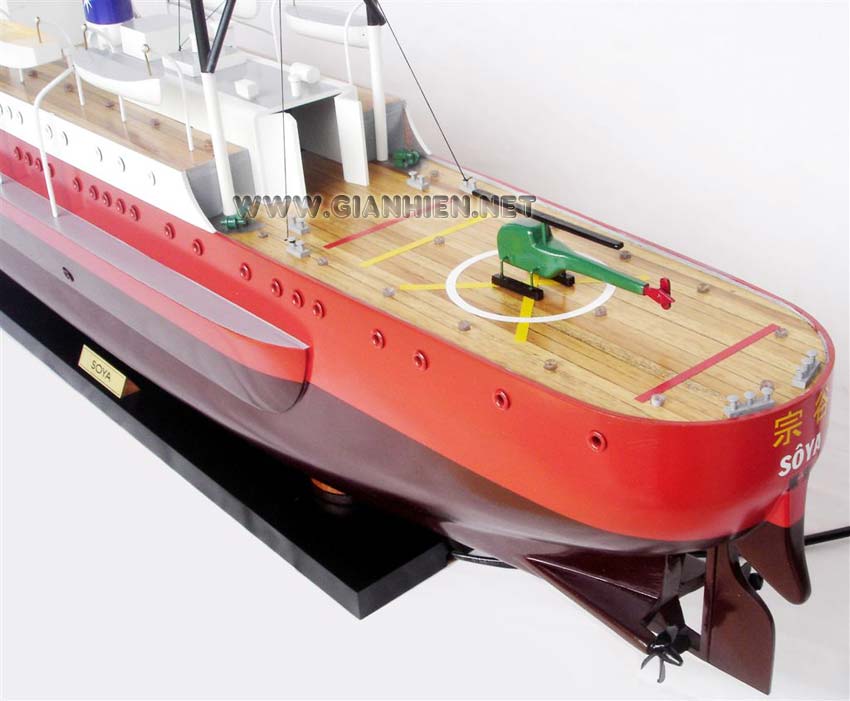
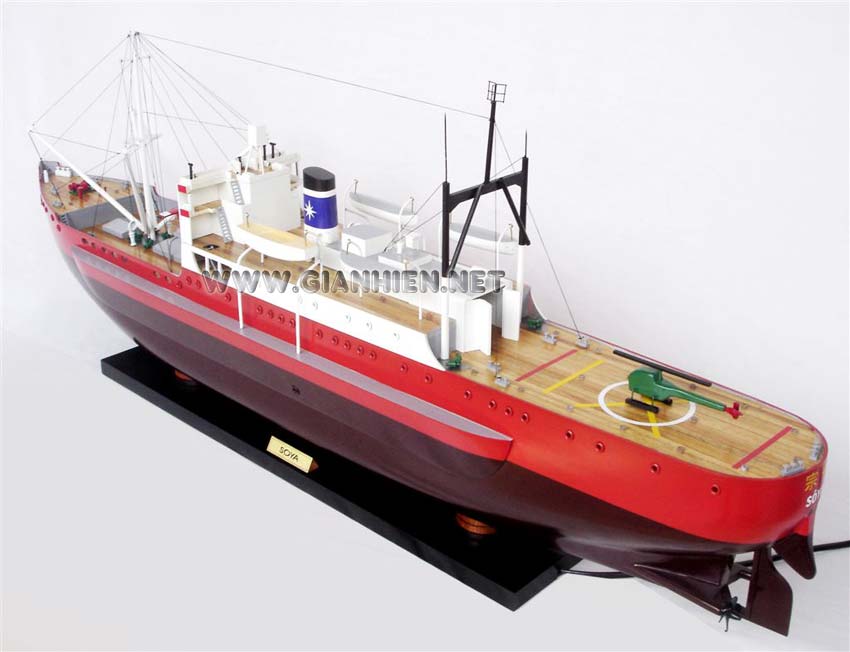
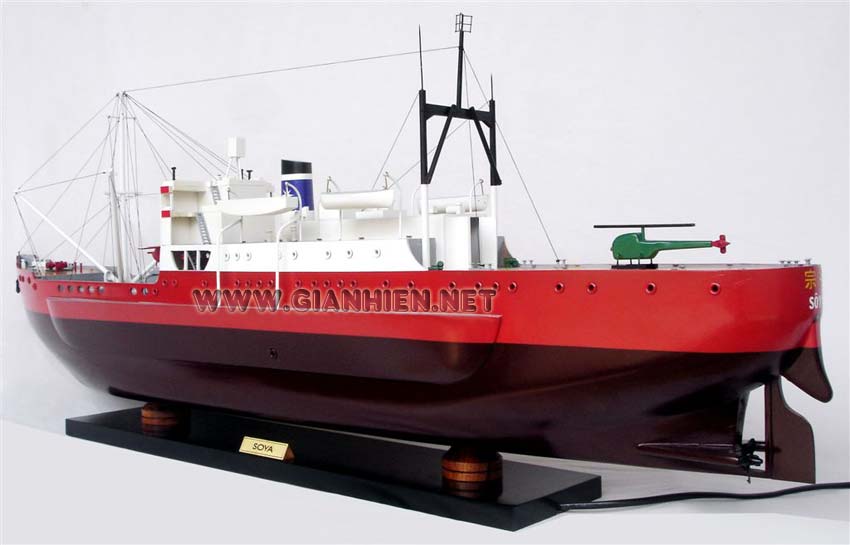
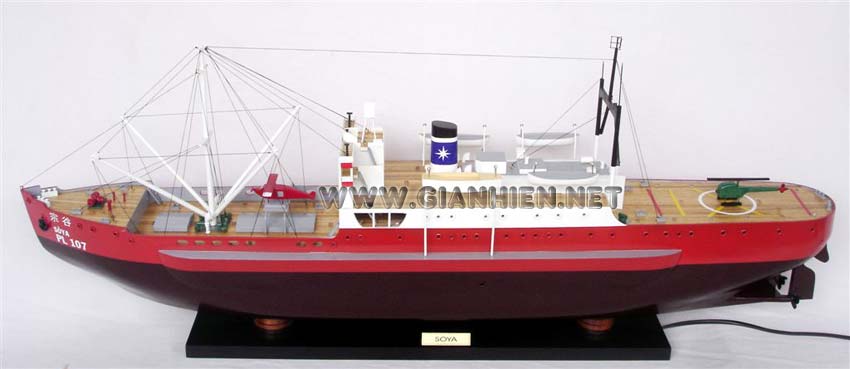
 The
Sōya (宗谷) is a Japanese museum ship that previously served
as an icebreaker and patrol boat, and was the first Japanese
ship to take part in an Antarctic research expedition.
The
Sōya (宗谷) is a Japanese museum ship that previously served
as an icebreaker and patrol boat, and was the first Japanese
ship to take part in an Antarctic research expedition.